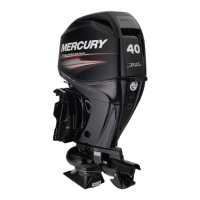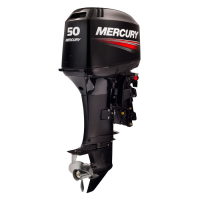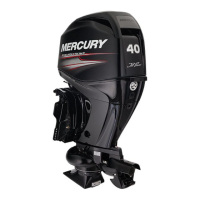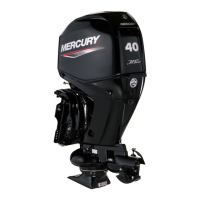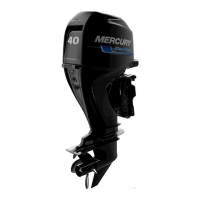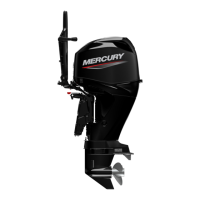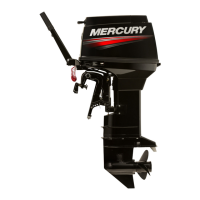TIMING, SYNCHRONIZING, & ADJUSTING
Page 2C-4 90-857046R1 NOVEMBER 2001
Timing
WARNING
To prevent personal injury or possible death, from loss of balance or stability while
servicing the motor, DO NOT attempt to check timing while boat is in motion. Failure
to follow one of the recommended servicing procedures may result in the person
falling overboard or causing personal injury from fall in boat.
WARNING
To prevent personal injury from spinning flywheel, Do Not attempt to remove fly-
wheel cover or place hands on top of cover when checking ignition timing.
Ignition timing is not adjustable. The Electronic Control Module unit electronically controls
the ignition timing.
When initially running the outboard, use a timing light to verify that the ignition timing falls
within the timing windows as described within the following tests. If the ignition timing does
not stay within the timing windows, replace the ignition E.C.M. unit and retest. (Refer to the
Ignition Diagnostic Procedures tests in Section 2A.)
IMPORTANT: When checking the timing with the engine running, one of the following
test procedures must be followed.
Check maximum timing per specification while running the outboard:
•IN A TEST TANK
•ON A DYNAMOMETER
•ON A BOAT SECURED ON A TRAILER “Backed in Water”
1. Attach timing light to #1 spark plug lead.
c
d
59252
b
a
a-Timing Light Clamp
b-#1 Spark Plug Lead
c-Timing Window - Electric Start Models
d-Timing Window - Manual Start Models

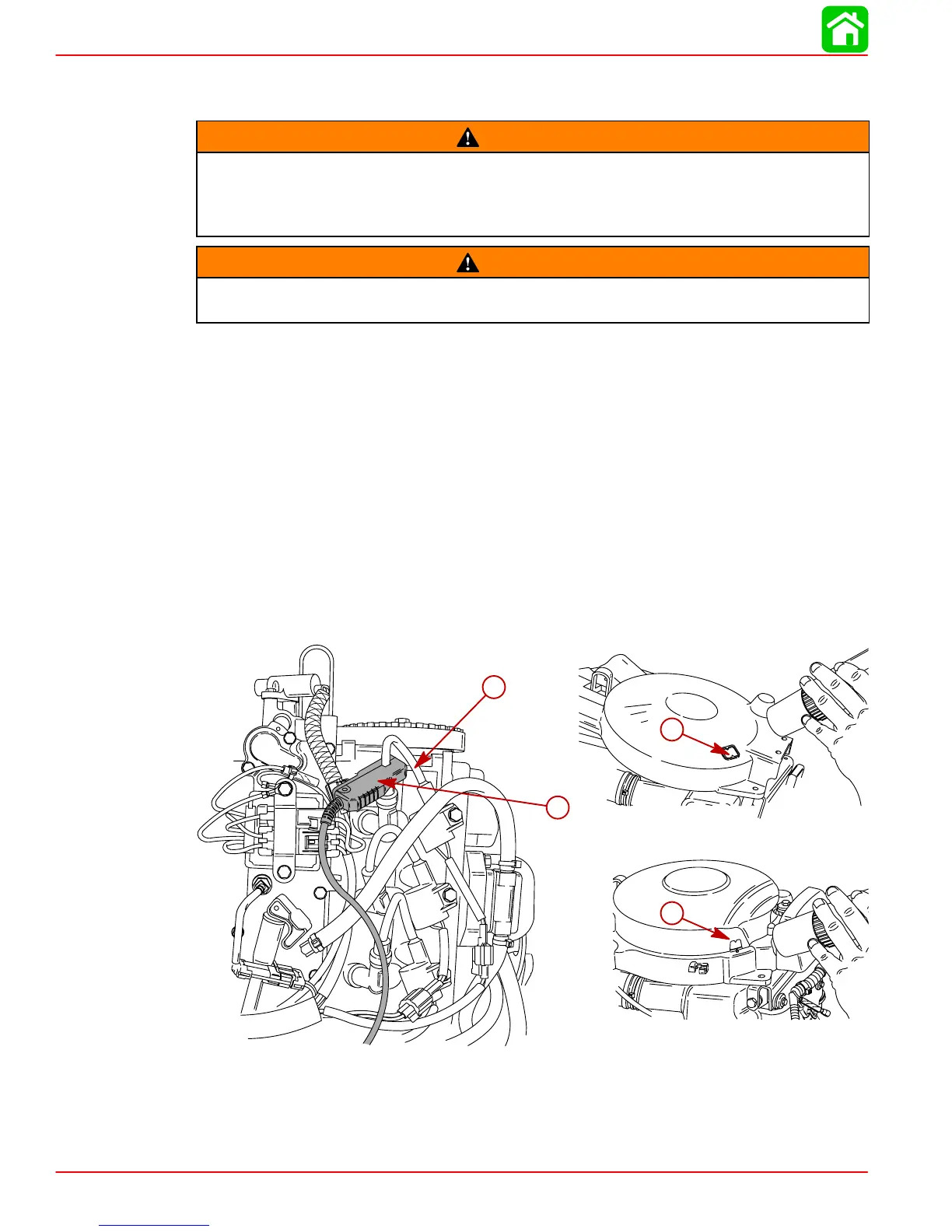